
Annual social media prediction posts deserve their own category of boring. They usually name the same obvious trends over and over! This is the year of video! (yawn) And yet, we are in the midst of unprecedented, cataclysmic change. Let’s consider some non-obvious social media trends that are insightful, bold, and important!
And you will be happy to know that I barely AI at all (too obvious!).
This post covers 10 non-obvious social media trends:
-
Marketing speed
-
Why social media will upend search
-
The big new platform on the horizon
-
Why influence is everything
-
Social listening platforms in trouble
-
The essential role of community
-
Social commerce
-
Designer commerce
-
Watermarked content
-
Local content hubs
![]()
1. Marketing speed
This is the year for video! Just kidding. Couldn’t help myself.
Response speed is among the most overlooked and important factors weighing in on social media success, and nobody is talking about it.
A few months ago, I wrote a blog post tracing the history of speed in marketing and the implications of meme marketing. Today, achieving relevance on a channel like TikTok might require a response time of hours, or perhaps minutes, as memes emerge and fade.
Most companies are not built for this response time, especially if there are legal consideration. The speed of marketing today has vast implications for measurement, customer service, legal, and agency relationships.
One financial services firm I work with hired a lawyer for their marketing team just to speed content approval. How are you adjusting to the need for speed?
2. Social upends search
Everyone seems to be focused on how AI will change the game for search. But nobody seems to be noticing a much more significant and non-obvious trend. According to information from Statista, Gen Z is now conducting almost as many product searches on social media as Google:
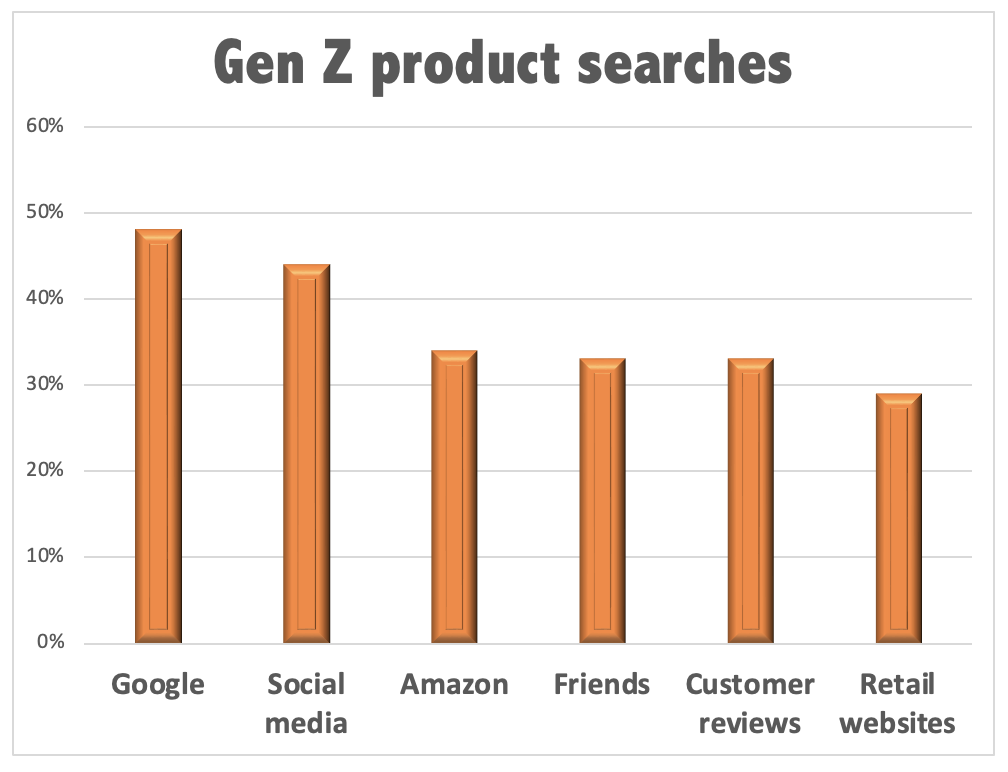
This ties closely to the influencer marketing trend. The primary reason Gen Z visits social media is to catch up with their favorite influencers. And the main idea being shared by most influencers? New products they love.
But this isn’t just a GenZ trend. GWI reports in their 2024 trend report there’s been a 57% rise in baby boomers using TikTok since Q2 2021 … and they’re more likely to have bought a product or service online in the last week than Gen Z.
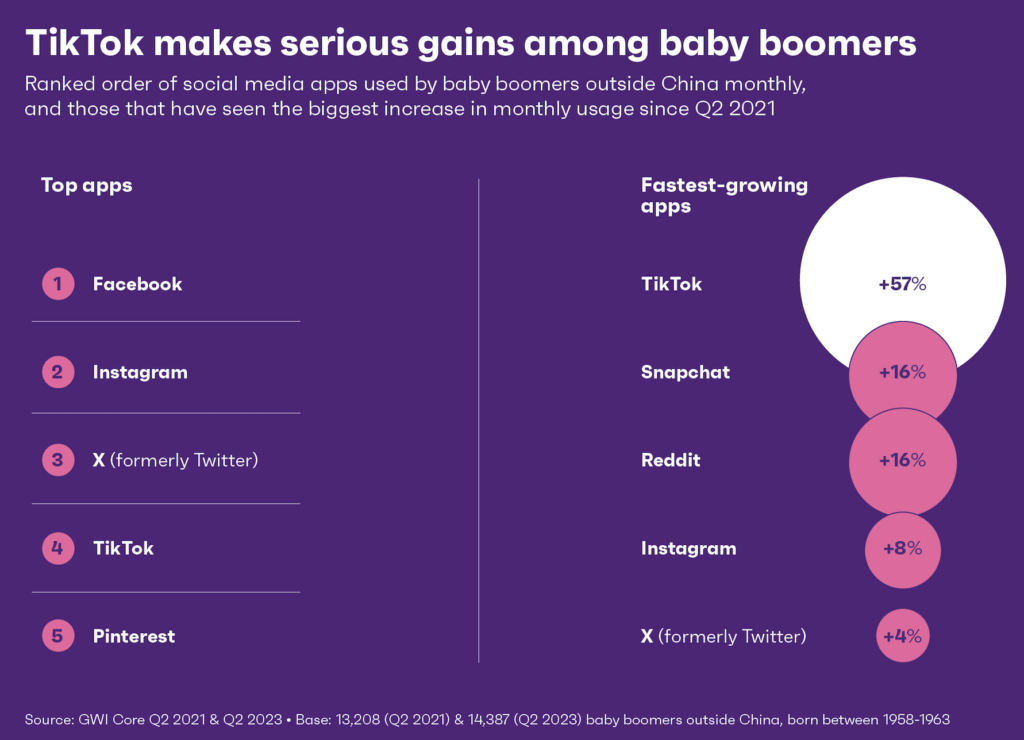
This suggests that SEO needs to be tied more closely to influencer marketing. Anybody out there planning for this? Is it even on the radar?
3. The big new platform
 There seems to be just one significant new social media platform every five years or so. What’s going to be next? Nobody can say, but I have some clues.
There seems to be just one significant new social media platform every five years or so. What’s going to be next? Nobody can say, but I have some clues.
Social media platforms have fragmented along generational lines. The only group growing on Facebook is 55 and older. The Snapchat crowd averages about 28. The average age of people on Reddit is 23. TikTok is the homebase for GenZ in their 20s. Everybody seems to like YouTube and Instagram
I think the next fracture will occur for Gen Alpha, the digital natives marching behind Gen Z. They’re looking up at their big brothers and sisters, thinking, “Naaaaah. We want our own place.”
And they will get it. What will it be like? Certainly video-oriented, but also expressing their value for authenticity and relationships. It might be something with only verified non-AI content. Maybe a cross between TikTok, Snapchat, and BeReal.
This might be beyond the next 12 months, but perhaps it’s time for a decentralized social network powered by blockchain. Just don’t call it blockchain. Transparency, control, and security will be mighty issues going forward and blockchain can help solve for that.
4. Influence is everything
The marketing world is in a state of massive transition. Advertising is less visible in a streaming media world and more expensive than ever. Where are these brand marketing dollars going to go?
I recently reported on new research from Ed Keller that points to one answer: Influencers. Ed found that the creator economy is massive — three times bigger than previously estimated. This trend has largely flown under the radar because it’s been so hard to measure.
Top YouTuber Mr. Beast just completed two months where he received more than 2 billion views per month. That’s staggering, unprecedented reach. He is perhaps the most influential media company in the world. A product placement with Mr. Beast might have bigger reach than an ad on the Super Bowl.
Not many people like being interrupted by ads. If they see them, they don’t believe them. But we believe each other, especially digital creators like Mr. Beast who feel like part of the family.
A new report found that 39% of consumers are watching more creator content than a year ago. Let that sink in. Can you imagine any other media property getting a 39% boost in one year? Advertising alongside creator content can jump-start the purchase funnel process, collapsing the awareness, interest, and consideration stages together.
The impact, reach, and influence of creators is exploding and yet an influence strategy is not even on the radar yet for most companies.
Creators are the media. Creators will dominate our marketing future. Are you onboard yet?
5. Social listening is in trouble
According to Edison Research, between 2022 and 2023, the percentage of people actively using the social community app Discord rose from 13 percent to 20 percent. You might think, “Wow. That’s a lot of growth. But here’s a chart that will really blow your mind:
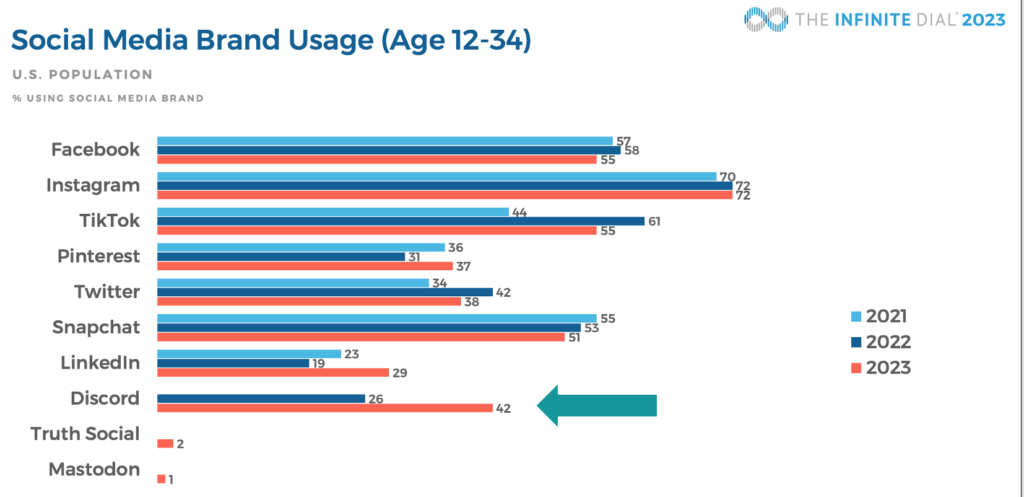
First, notice the decline of young people using TikTok. Interesting. Now, look at the growth on Discord. In the age 12-34 category, daily usage rose from 26% to 42% IN ONE YEAR.
When have we ever seen growth like that on a social media platform? Never.
But here’s where it gets really interesting. Many of these vital community conversations on Discord are invisible to social listening platforms like Sprout Social and Sprinklr. Brands relying on social listening to monitor sentiment, mentions, and competitors are becoming more blind month by month as young people huddle behind the Discord /metaverse firewall.
6. Community is the future of marketing
The other day, I saw a provocative quote: “Creators are the new priests.”
It’s not about religion of course. It’s about assembling people. I can see this. In fact, I wrote a whole book about the idea. In Belonging to the Brand, I explained how the world is in a belonging crisis and those who can bring people together in community can create a deep and lasting emotional connection … which of course is the goal of your brand.
I’m not suggesting that brands take advantage of the emotionally vulnerable. I’m saying that brands are a part of our lives and there is room for brand-based communities that truly connect, and even heal.
I’m not alone in this view. The day I finished writing my book, McKinsey published a white paper claiming community is the next big thing in marketing.
Social media is not a strategy. It’s the beginning of a process that leads to community, as I wrote here.
7. Social Commerce, finally
In 2022, we witnessed the steady rise of social commerce, which allowed social media users to purchase products directly on social media. In 2024, social media platforms are expected to continue to become popular shopping outlets for consumers.
Furthermore, it’s projected that by 2026, global social commerce sales will reach a whopping $6 trillion, with the US having approximately 108 million social buyers by 2025.
A HubSpot survey shows that 22% of social media users purchased a product directly from Instagram, followed by 21% of consumers who bought directly on Facebook.
“Live commerce” combining influencer, livestreaming, and impulse buying eCommerce has taken off in Asia and this is the year it makes its mark in the rest of the world.
8. Designer content
OK, dream with me for a moment.
The business of social media is a battle of recommendation engines. The platform that can feed you the most fascinating and addictive content wins, because the longer you stay there, the more information they collect, the more ads you see, and the more money they make. For better or worse, the goal is to develop algorithms that create addiction, which is another story entirely.
Now let’s say Instagram learns that you love photos of kittens. Specifically, you want cute kittens dressed in human clothes. Why wouldn’t Instagram simply connect you to an AI that generates endless photos of cute kittens, like this:
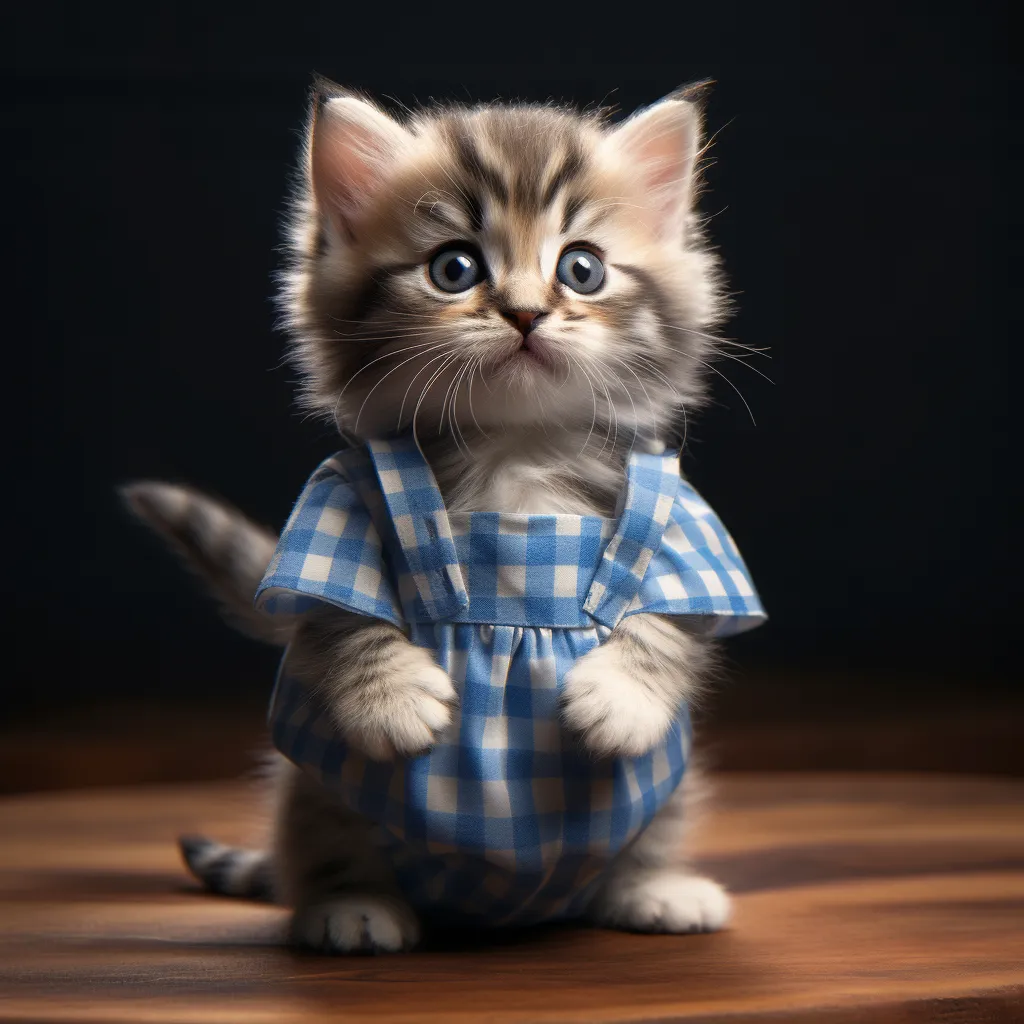
I generated this image on MidJourney in five seconds. Here is the prompt I used: Cute kitten dressed in a blue gingham dress, photorealistic. In other words, this was extremely easy to do.
Why wouldn’t Instagram make you even more addicted to its platform by giving you exactly what you want, every day, every click by literally harnessing AI to generate your ideal, addictive images?
Stay with me. Within 18 months, we’ll be able to create full-length AI-generated movies on our laptop. Why wouldn’t Instagram and other social platforms create exactly the video content you want every day? At some point, Netflix and Disney will be doing this, too. You’ll get custom movies delivered to you some day soon.
We’ll just sit there sucking down content all day because we’re so mesmerized by those kittens. Maybe that’s how the Matrix started! You heard it here first: We can blame The Matrix on kittens.
9. Watermarked content
This is the year we will see massive disruption from deep fakes. In fact, it will be more than disruption. It will be chaos. I’ll bet we see at least one death this year attributed to deep fake content/misinformation.
We simply must have some kind of safety watermark for content so we know what’s true. There is progress in this area, but the challenge is creating a watermark that can be universally detected yet can’t be faked.
If you’re working in social media and content creation, this will soon be a major priority for you.
10. Local content hubs
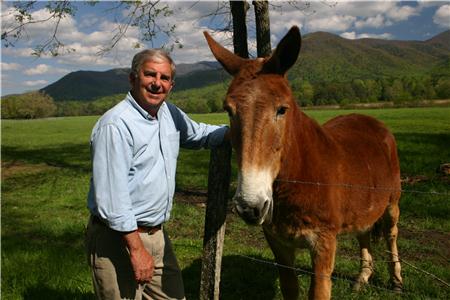
Bill Landry
In my hometown of Knoxville, we have a local celebrity named Bill Landry. I could argue that he was the first independent video creator to monetize an audience — but it wasn’t over YouTube. It was over local TV.
Bill was the writer, director, producer, and actor in a video project called The Heartland Series. He filmed 1,400 short stories about Appalachian history, food, crafts, and rural life. Bill was a remarkable storyteller and his little videos were broadcast on the local TV station, sold as DVD sets, and even put together in a book. Because of his self-made celebrity, Bill was an in-demand speaker.
The classic creator model — build an audience and then monetize. But this was happening in the 1980s!
This is the only partnership between a “creator” and mainstream TV I’ve ever heard of. But why couldn’t this format be widespread today?
Today’s local TV studio has plenty of unused production and ad sales capacity, while local creators need a revenue stream, production facilities, and an audience. It makes total sense. Why wouldn’t local TV stations produce local cooking, sports, and music shows for a livestreaming audience and create a new revenue stream?
This is actually a retro idea. The early local TV stations hosted lots of local talent to fill the airwaves. Today, there seems to be a wall between traditional TV and streaming content, but why? If social media is so crowded, why not reimagine local TV as a relevant community content hub?
Perhaps the most non-obvious social media trends involve posting content and earning audiences in non-traditional places.
![]()
So there you have it. I hope a few of these non-obvious social media trends made you think, and perhaps provoked thoughts about new marketing strategies and business opportunities. The world of marketing is endlessly fascinating, and these trends are just the tip of the iceberg of what’s ahead!
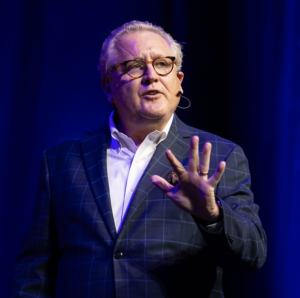 Need a keynote speaker? Mark Schaefer is the most trusted voice in marketing. Your conference guests will buzz about his insights long after your event! Mark is the author of some of the world’s bestselling marketing books, a college educator, and an advisor to many of the world’s largest brands. Contact Mark to have him bring a fun, meaningful, and memorable presentation to your company event or conference.
Need a keynote speaker? Mark Schaefer is the most trusted voice in marketing. Your conference guests will buzz about his insights long after your event! Mark is the author of some of the world’s bestselling marketing books, a college educator, and an advisor to many of the world’s largest brands. Contact Mark to have him bring a fun, meaningful, and memorable presentation to your company event or conference.
Follow Mark on Twitter, LinkedIn, YouTube, and Instagram
Top image courtesy Unsplash.com
Kitten image was created on MidJourney


